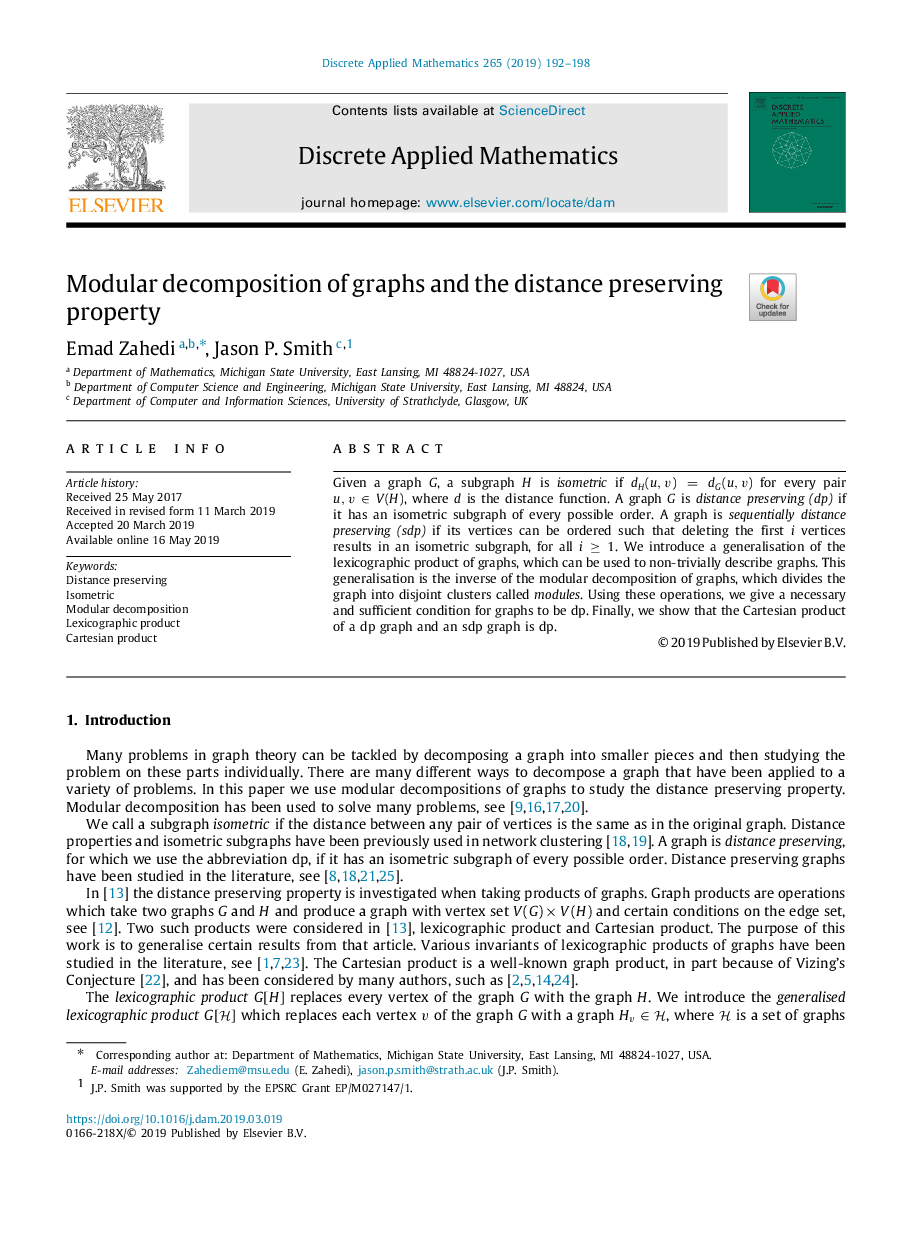| Article ID | Journal | Published Year | Pages | File Type |
|---|---|---|---|---|
| 13430901 | Discrete Applied Mathematics | 2019 | 7 Pages |
Abstract
Given a graph G, a subgraph H is isometric if dH(u,v)=dG(u,v) for every pair u,vâV(H), where d is the distance function. A graph G is distance preserving (dp) if it has an isometric subgraph of every possible order. A graph is sequentially distance preserving (sdp) if its vertices can be ordered such that deleting the first i vertices results in an isometric subgraph, for all iâ¥1. We introduce a generalisation of the lexicographic product of graphs, which can be used to non-trivially describe graphs. This generalisation is the inverse of the modular decomposition of graphs, which divides the graph into disjoint clusters called modules. Using these operations, we give a necessary and sufficient condition for graphs to be dp. Finally, we show that the Cartesian product of a dp graph and an sdp graph is dp.
Related Topics
Physical Sciences and Engineering
Computer Science
Computational Theory and Mathematics
Authors
Emad Zahedi, Jason P. Smith,
